
Alexander The Great
Alexander The Great's body was failing to decompose, six days has passed since his death and the ancient Greek's were in utter awe. His loyal followers believed that this was the confirmation that he was indeed a god. But modern scientists have since said otherwise. According to one theory, the king's body wasn't decomposing because he wasn't dead yet.
Alexander the Great was possibly the most famous person in history to have been buried alive.
Alexander's was recorded to have died in 323 B.C. After a 24-hour drinking spree, he came down with a sudden fever and felt pain in his back, "as though smitten with a spear." Soon he was paralyzed and then he was rendered speechless. It wasn't long before 32-year-old Alexander was pronounced dead.
His cause of death has remained a mystery, but recently a doctor thought she discovered the cause.
Dr. Katherine Hall of the University of Otago in New Zeland said that Alexander suffered from Guillain-Barre Syndrome (GBS), in Feburary 2019. This is a rare autoimmune disorder that can lead to fever, abdominal pain, and paralysis. And Dr. Hall thinks this exactly fits Plutarch's account of Alexander's death.
"The combination of ascending paralysis with normal mental ability is very rare and I have only seen it with GBS," Hall said.
She also suggested that Alexander contracted the rare disorder from a Campylobacter pylori infection, this is the most frequent cause for the disorder world-wide.
But, back in the fourth century B.C. doctors didn't use the pulse of a patient to deem them dead, they instead used their breath. And since Alexander was paralyzed, his body required less oxygen, so his breathing was kept to a minimum. So, his pupils were dilated and he had a lack of response to stimuli, so the doctors assumed he was dead. But, his mental faculties were completely intact still.
Dr. Hall believes that Alexander was pronounced dead six days before he was truly dead. That would explain why Plutarch described his body as "pure and fresh" for days. And this would also mean that Alexander was buried alive.
However, some scholars have disputed Dr. Hall's explanation. For one, her source material was written 400 years after the death of Alexander. And it is impossible to properly diagnose someone without examining their remains. And Alexander's burial site has never been found.
But, that doesn't make Dr. Hall's theory any less scary.
"I wanted to stimulate new debate and discussion and possible rewrite the history books by arguing Alexander's real death was six days later than previously accepted."
The Ravenous Beast of Gevaudan

For three years during the 18th century, it is reported that a ferocious, wolf-like beast roamed the French countryside, mauling nearly 300 villagers. Most of those who were killed were women and children. The local newspapers published terrifying accounts of the beast and dubbed it The Beast of Gevaudan.
The first victim that was recorded was a 14-year-old shepherdess named Jeanne Boulet, she was discovered in 1764 with her throat ripped out. And a month after, a 15-year-old was found dead as well, but she managed to describe her attacker as a "horrible beast" before she succumbed to her wounds.
There were more than 100 people who had their chests or throats ripped out and news of the beast made international headlines.

Corpses were showing clear signs that they were attacked by something that had sharp claws and teeth. And the press described a wolf-like animal that had russet and black fur, a wide chest, large mouth, and very sharp teeth.
And it wasn't long before infantry leader Jean Baptiste Duhamel organized a 30,000-volunteer hunting party to hunt down and kill this beast. They were offering a reward equivalent to a year's salary for ending the beast's life.
After these efforts didn't work, King Louis XV sent his own bodyguard, Francois Antoine, down south to finish the job.
In September 1765, Antoine and his team killed a large wolf. They then returned to Versailles and received their reward and the attacks seemed to be over. But, this only lasted a couple of months.
The animal's description became more and more fantastical with every attack. Some described it as a supernatural being that walked on its hind legs while others said it was more like a werewolf.
One local farmer was so fed up with losing his loved ones and living in a constant state of terror that he took matters into his own hands.
Jean Chastel wandered the mountains, he was armed with a gun and a few silver bullets. He read the bible and hoped that it would make him an easy target for the beast to be lured from his lair.
And it worked, the beast appeared. Jean Chastel shot it and brought it to the king. Some accounts describe the beast as being opened up and human remains tumbling out of it.
For years Historians have debated what actually occurred Gevaudan. Some argue that it was just mass hysteria and a pack of wild wolves. Others claim it was a lone, rabid wolf or an escaped lion.
Jessica Lunsford

On the night of February 23rd, 2005, John Evander Couey broke into the Lunsford's family's home in Homosassa, Florida and kidnapped nine-year-old Jessica Lunsford. He took her to his nearby trailer and proceeded to rape her over the next three days before he put her into a couple of garbage bags and bury her in his yard.
The girl was found clutching a stuffed dolphin, her attacker allowed her to bring it with her before he committed his unspeakable acts. Jessica's blood was found on a mattress in Couey's home as well as her fingerprints.
It is said that her killer told her that he would take her home and that he didn't want her to be seen and get into trouble. So he went on to convince her to climb into a garbage bag, where he would then place a second bag over her head before he went on to shove her into a hole in the ground and cover her with dirt.
As Jessica was buried, she managed to poke a few fingers through one of the bags before she suffocated to death.
To make the series of events even more heart-wrenching, prosecutors later realized that Jessica was probably alive when police went to interview Couey in his home.
Couey's timeline after he kidnapped Jessica Lunsford leaves open the possibility that she was alive, and in the house, at the time of the first and possibly second interview with Couey."
Jurors convicted Couey of first-degree murder, kidnapping, and other charges in 2007.
"He caused a slow, suffering, conscious death," Judge Ric Howard said about the murder, "Her only source of comfort during this horrific experience was her purple dolphin."
Couey died of natural causes in 2009. and it was tough for not only Jessica's family, but investigators as well to find solace.
"I know he didn't suffer the way Jessie did when he killed her," said chief investigator Sheriff Jeff Dawsy, "I'm sorry I won't get to look him in the eyes as he died, but I am relieved to know he'll never hurt another child again."
Cold War-Era Vanishing at Dyatlov Pass
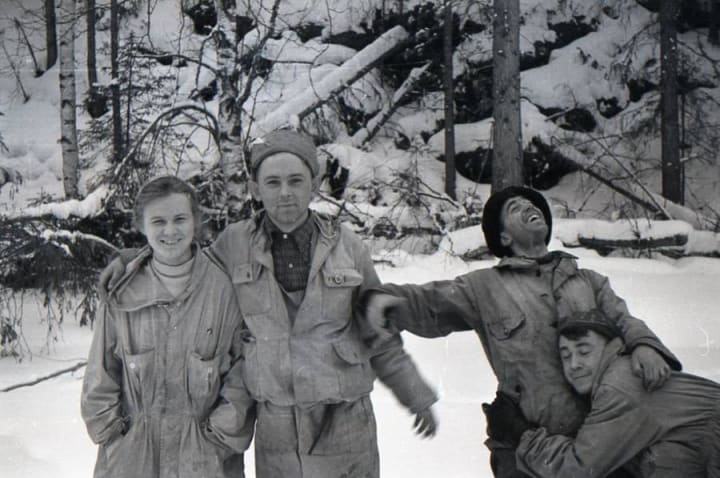
On January 27th, 1959, 23-year0old Igor Alekseyevich Dyatlov and his fellow students and researchers as Ural Polytechnic Institute started on their hiking journey.
There was ten people on this journey, and their goal was to reach the summit of Otorten, a mountain in the Northern Urals. After they set out on their hike, they were never seen alive again.
Their bodies were recovered weeks later, and the discovery only raised more questions and provided little answers.
Dyatlov told his sports club that he would notify them via telegram once they returned, but the lack of communication led to growing concern. Army and police investigators were sent out to investigate on February 20th. They found dead bodies six days later, the state of the bodies were so bizarre they looked straight out of a nightmare.
Their tent was cut open from the inside, their belongings, including shoes, were left inside. They then discovered eight or nine sets of footprints in the snow that were made by the shoeless individuals, the tracks led to the woods that were a mile or so away.
The found the first two bodies in a forest near the remains of a campfire. Despite the temperatures of -13 to -22 degrees Fahrenheit, both Yuri Kirvonischenko and Yuri Doroschenko were wearing only their underwear.
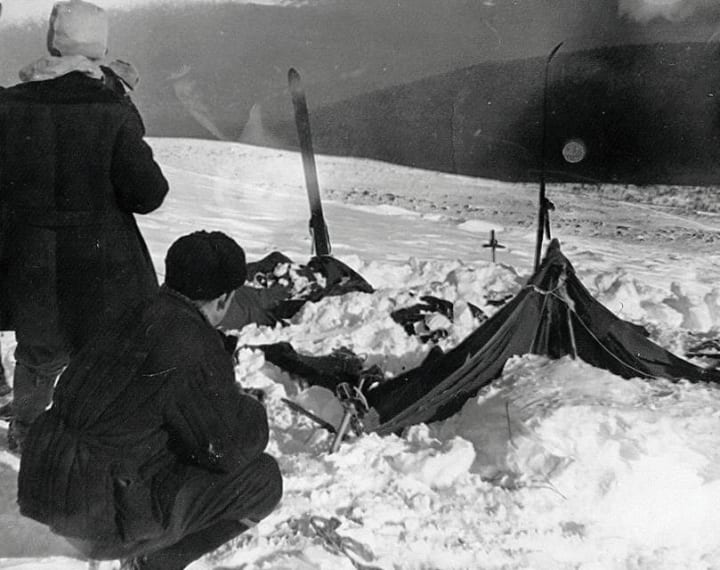
The next three of the bodies were found on the way back to the camp, they were all in various states of being undressed. The cause of death was deemed hypothermia.
The half-naked bodies weren't the strangest finds. The other four bodies were discovered in a ravine two months later, once the snow started to melt, this was when things started to get even weirder.
Two of the four, Lyudmila Dubinina and Semyon Zolotaryov were missing their eyeballs and both had broken ribs. Dubinina's tongue was also missing. Nikolay Thibeaux-Brignolle soffered from severe fractures to his skull, the sort that are the result of a car accident. And clothing from two of them tested positive for radioactivity.
No clear-cut explanations have been put forward.
Investigators took a look at the hikers' diaries and undeveloped photographs for clues, but all they showed as the weather and visibility worsened as the hikers' continued on. That would explain the hypothermia, but this doesn't explain the missing eyeballs and tongue.
There is a theory that says they accidently headed west and ended up on the slope of a mountain that is called Kholat Syakhl or "Dead Mountain," by the indigenous Mansi people, this is were the Mansi then ambushed the unsuspecting hikers.
Others suggest there was a forceful avalanche, or that they might have gone insane from the hypothermia. But, others believe the murders were part of a Soviet cover-up of secret radioactive weapon testing.
However, there is no evidence for any of the theories.
Leonard Lake and Charles Ng
Leonard Lake and Charles Ng were American serial killers who managed to go undetected for two years before their arrest. They brutally tortured and killed 25 people in a remote cabin located in the foothills of California's Sierra Nevada mountains.
Leonard Lake was a Vietnam vet that served two tours before he was medically discharged from the marine Corps in 1971. He was diagnosed with "impending schizophrenia" after he suffered a mental breakdown during the war.
Once back in the US, his trauma led him down a dark park. However, he did display troubling signs during his childhood, he would take nude photographs of his sisters and cousins and started to mutilate animals.
After he was discharged, Leonard seemed to acclimate to the hippie lifestyle that was starting to take off in California. He was working as a store clerk and he was married to a girl in met in San Jose by 1975, but they divorced the following year.
Even after he remarried, he had a lust for carnaal viscera. He was convinced that a nuclear holocaust was going to destroy all life on Earth. So, he created a survival bunker in his wife's cabin in the woods.
He went on to invite his little brother Donald and his friend Charles Gunnar, he then murdered the two and took on Charles' identity in public.
He posted an ad in order to find another victim, but, instead, he found his accomplice, Charles Ng. Charles was younger, but grew up eerily similar to Leonard, the two enjoyed similar passions.
The pair lived in the cabin together and set out on their torture killing spree that shocked the nation. Between 1983 and 1985, Leonard and Charles kidnapped, tortured, raped, and murdered between 8 and 25 people in their bunker. The remains of 12 victims were found on the property, as well as a 40-pound collection of charred human bone.
Leonard and Charles would hold their female victims hostage and keep them as sex slaves, they would be held in a six-and-a-half by three-and-a-half-foot cinderblock bunker. There was nothing but a bucket and toilet paper and it was lined with a one-way mirror. After the two raped their victims, they would kill them, chop them up, and dissolve their body parts in acid.

Many of the victims were put in leg-irons before the sexual assualts took place, and some were so brutal, they didn't survive. Other victims were forced to watch their own partners get raped before they were to witness their murder.
In June 1985, their spree ended when Charles tried to steal a took from a hardware store.
Leonard arrived at the scene and paid for the item, but police started to question the two and quickly realized they had stumbled upon two dangerous individuals. They discovered a gun in Leonard's stolen car, this led to an arrest.
In a turn of events, Leonard was prepared for this sort of scenario by sewing cyanide pills to the lining of his clothing. He chewed a few up whilst in custody and died before he was every put on trail or set to prison.
Police managed to capture Charles a month later, and in 1999, was found guilty of 11 counts of murder. He remains on death row at San Quentin State Prison.
Robert The Doll
Robert the Doll was released in 1904 by the Steiff Company, a German toy manufacturer, they claimed that Robert was never intended as a consumer product, but he was instead made as a mannequin for window displays. But, he became much more than that, a doll that haunted whoever crossed him.
Robert ended up in the hands of a boy named Robert Eugene Otto. Some say a Bahamian maid of Gene's family performed voodoo magic on the doll and then gifted it to the boy as retribution for the family's trespasses. While others believe that the doll was a gift from the boy's grandfather, he was purchased in Germany.
Regardless of the origin of Robert, the doll has been described as supernatural by many. It has been reported to giggle, move to different rooms on its own, and punished those who treated him badly. Gene was overjoyed to receive his new gift and it accompanied him every where he went, he even dressed the black-eyed doll in a sailor suit that he wore as a baby.
"What people really remember is what they would probably term as an unhealthy relationship with the doll," Said Cori Convertito, a Robert the Doll expert. "He brought it everywhere, he talked about it in first person as if he weren't a doll, he was Robert. As in he is a live entity."
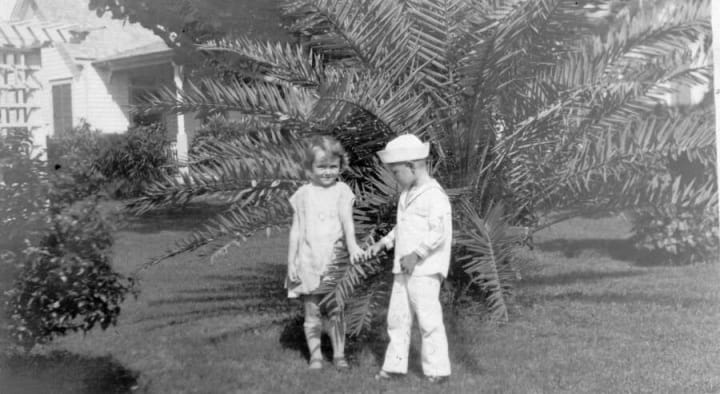
Gene built Robert a home in the family's home, strange things started to happen. Household items started to move on their own and Gene insisted that it was due to Robert and adults would laugh this off and suggested that it was just the child's overactive imagination.
Gene studied fine arts in Chicago and New York years later, and went on to attend the Sorbonne in Paris where he met his wife, Anne. The couple then returned to Gene's home in Key West, this was where Robert was permanently situated on a chair that faced out of a window located upstairs in the home.
A plumber who was working for the home swore he heard a child's laugh from inside the house, even though there was no one home. He also noticed that Robert had moved from one side of the room to the other and that toys that were in the doll's lap ended up on the floor across the room.
Gene passed away in 1974, and a woman named Myrtle Reuter bought the home, Robert the Doll was included. She lived with Robert for decades and she confirmed that he would move around independently without any explanation.
She ended up donating him to the Fort East Martello Museum, and soon after he settled into his new home in the museum's storage room, the place started to receive countless letters that begged for Robert's forgiveness. People would visit to see the doll.
Even with the museum making no announcement about the doll's whereabouts, it was gaining loads of attention. The museum reneged on keeping him out of visitors' sight, but they finally put Robert on display behind safety glass.
Inexplicable happenings still surround the mysterious doll even after more than a century, and many people have attempted to take a photo of him only to find out that their cameras suddenly don't work.
Bobby Dunbar's Disappearance
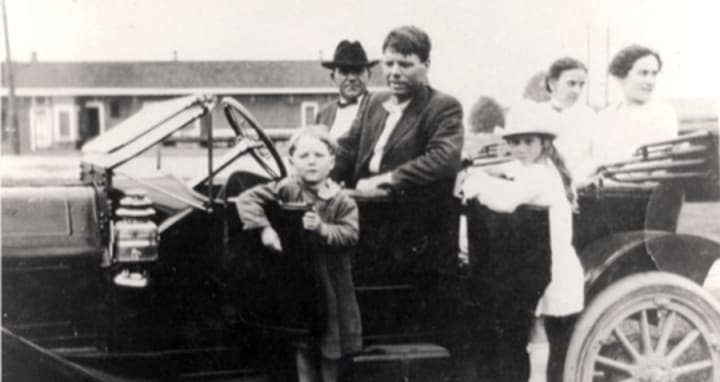
Young Bobby Dunbar went missing in 1912, the whole country was searching for him. The four-year-old Louisianan seemingly vanished into thin air on August 23rd during a trip to Swayze Lake. His parents, Lessie and Percy Dunbar were searching everywhere, but there was no leads.
Police started to dissect alligators and tossed dynamite into the lake and then went on to offer a reward of $6,000.
Eight months after Bobby went missing, police arrested a man name William Cantwell Walters on April 13th, 1913 in Mississippi. William was traveling with a boy that matched Bobby's description.
But, he claimed that the boy was Bruce Anderson, son of a woman named Julia Anderson, a field hand and caretaker for his parents. But, the cops forcibly took the child to the Dunbar home in hopes of reuniting the family with their missing child.
However, the Dunbars didn't recognize this boy as their son, they said his eyes were too small and the boy didn't recognize the couple either, or his brother Alonzo.

After Lessie Dunbar saw him the second time and gave him a bath, she celebrated the return of her boy, she claimed to recognize his moles and scars.
But, Julia Anderson rushed from North Carolina to Louisiana to get her son back.
There was no DNA testing at this time, so in order to determine whether the boy was Julia's son, police showed her the newly found boy as well as four other children, but she wasn't able to pick him out.
She was devestated, she gave up and returned home. The Dunbars were confident they had finally got their son back, but none of it ever sat right with Julia Anderson.
Nearly a century later, the truth came out.
In 1999, Bobby's granddaughter, Margaret Dunbar Cutwright, started to research her family's interesting past, she read documents in small-town libraries, historical archives, and courthouses.
Margaret's father, Bob Dunbar Jr., consented to a DNA test, his DNA was then compared to his cousin's, the son of Bobby's younger brother. This would be able to tell them whether their fathers had truly been brothers, or whether Bobby was actually Bruce.
The results were back and shocking. Bob Dunbar Jr. was not related by any blood to the Dunbar family. The returned child, all those years ago, was in fact, Bruce Anderson.
A mother was robbed of her son and another mother raised a stranger, all while her own child was likely dead all along.
Albert Fish, the Brooklyn Vampire
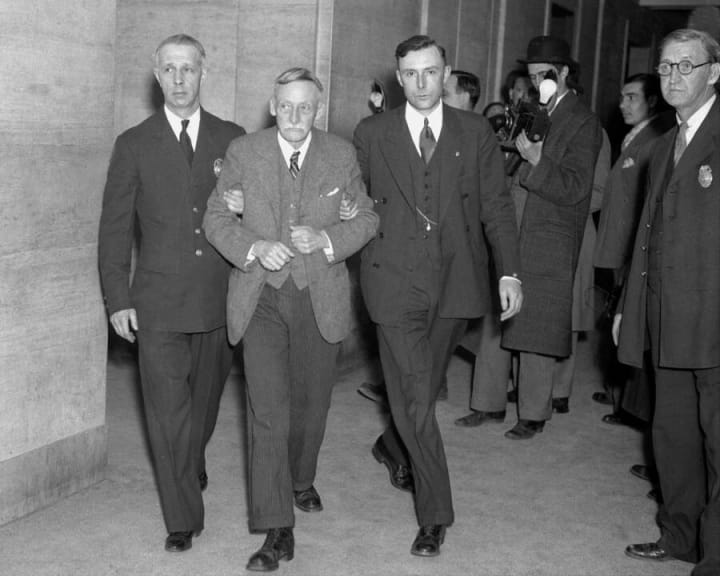
Albert Fish has many nicknames, Brooklyn Vampire, Werewolf of Wysteria, and the Gray Man. He was born on May 19th, 1870, his family was plagued by mental iullness and he was thrown into a New York orphanage.
The caretakers would routinely beat the children and encouraged violence among them. Due to this, Albert stared to associate pain with pleasure which later included sexual gratification.
His mother became self-sufficient again and removed Albert from the orphanage in 1880, and he started to beat himself. Albert was soon introduced to urolagnia and coprophagia by a telegraph boy. These terms simply means eating and drinking his own waste. This sexual punishment, of sorts, later went on to him shoving needles into his groin and stomach while flagellating himself with a nail-ridden paddle.
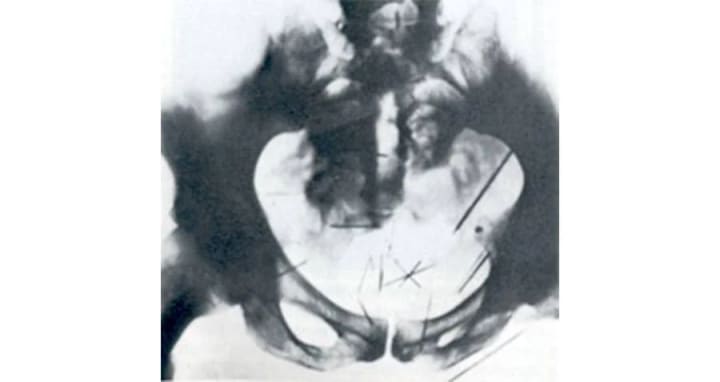
Albert moved to the big city in 1890, this is where his crimes against children took a hold. He was only 20-years-old and working as a prostitute, he would regularly lure children from their homes to then torture, rape, and murder them. He first used his nail-fitted paddle on them, but his bloodlust soon progressed to eating their bodies.
Albert got married in 1898 and was a father to 6 children. His wife ran off with another man in 1917, this caused him to include his kids in his sadomasochistic practices. He would force them to paddle him until he bled and press needles into his body.
He started to hunt children across state lines, he mainly targeted African American children, and sadly authorities paid more attention to missing white children. Albert's innocent victims were forced to endure his "instruments of hell" which included meat cleavers and knives along with his favorite paddle.
Albert answered a classified ad from an 18-year-old named Edward Budd in 1928, who was searching for a job. This meeting started a series of events that would lead to Albert's arrest years later. Albert claimed that he was a Long Island farmer named Frank Howard and that he needed a worker to help out on his estate.
Albert appeared gentle and kind, and after he had a lunch with the Budd family, they completely trusted their new financial savior. Albert said that before he could take Edward to the farm, he first had to attend a children's party at his sister's home and that their daughter, 10-year-old Grace Budd, should come along. The family agreed and they never saw their daughter again.
Police investigated Grace's disappearance for 6 years with no signs of concluding. That was until Mrs. Budd received a letter on November 11th, 1934, this letter detailed the killing and cannibalism of her daughter, the writer went into detail on how he stripped her, strangled her, dismembered her, and ate her in an empty home in Worcester, New York.
The police quickly traced the letter's paper and found their suspect in a flophouse. Albert Fish quickly confessed to the murder of Grace Budd and hundreds more, he smiled as he recounted how he murdered his victims. He pled innocent by reason of insanity, but the jury found him sane enough to kill.
He was killed by electrocution at Sing Song prison on January 16th, 1936.
The Sodder Children

It was the night before Christmas 1945 in Fayetteville, West Virginia when tragedy struck. A house fire consumed the Sodder family home and killed five of their nine children.
The fire started at 1 Am, George and Jennie escaped with four children, and when George attempted to reenter the home to rescue the remaining five, he was faced with failures, his ladder was missing, and neither of his two cars would start.
Firefighters wouldn't arrive until 8 AM, the home was just a pile of charred rubble at this point. They ruled it as an electrical fire and the coroner's office issued five death certificates. But, not a single bone or piece of flesh was found.
But, the parents were unconvinced that Maurice, Martha, Louis, Jennie, and Betty perished in the fire. So, they put up a billboard along Route 16.
A crematorium employee confirmed to Mrs. Sodder that bones tend to stick around even when bodies are burned for two hours at 2,000 degrees and the Sodder's home had only lasted 45 minutes. And things started to get weirder once the family remembered the strangers that appeared at the home a few months earlier and an odd phone call on the night of the fire.
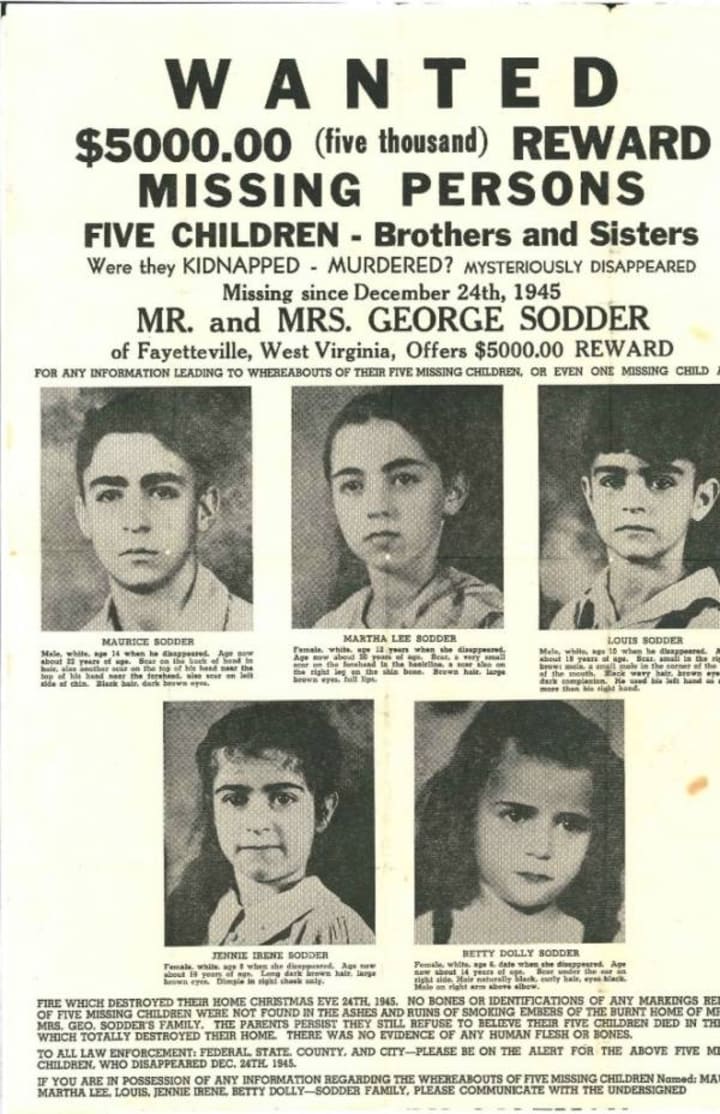
A strange man appeared in the autumn, he was searching for work. That was when he pointed towards their fuse box and said, "This is going to cause a fire some day." then another man showed up not too long after this, he was trying to sell the family life insurance, but they declined.
"Your goddamn house is going up in smoke," The man warned them, "And your children are going to be destroyed, you are going to be paid for the dirty remarks you have been making about Mussolini."
George did voice his opposition to the Italian dictator at local meetings, but he didn't take this man's statement as a serious threat.
Minutes before the home caught fire, a phone call from a female stranger asked to speak with an unfamiliar person, Jennie could hear laughter and glasses clinking, "You have the wrong number," She quickly said before she quickly hung up.
Where were the missing children? The first sighting that was reported was from a woman who said she has served them breakfast at a tourist stop that was 50 miles west. Another report claimed she had seen four of the five children at a Charleston hotel.
The Sodders attempted to reach out to the FBI for support, but J. Edgar Hoover turned them down. So, they instead hired a private investigator, C.C Tinsley, he found out that the insurance salesman from the pervious fall was actually a member of the coroner's jury that labeled the fire as the result of faulty electrical wiring.

The family started to search the grounds where their house was and they found a few vertebrae, they sent the bones to the Smithsonian Institution for analysis. This was when pathologists determined that the bones belonged to the same person, but were not exposed to the fire.
The family's reward for new information was doubled. This resulted in a number of calls and claims that people have spotted the missing children. 20 years passed with no real leads, that was before Jennie received a promising clue, a letter from Kentucky with no return address, inside was a photograph and a cryptic note.
Louis Sodder. I love brother Frankie. Ilil [sic] Boys. A90132 or 35.
The photo in the letter was of a man who was in his his mid-20s, he resembled their 9-year-old son, Louis, now all grown up. When they sent a detective to Kentucky to investigate, he ended up disappearing. The Sodders added this photo to the billboard, but they still never found their missing children.
"Time is running out for us," George Sodder said in an interview, "But we only want to know. if they did die in the fire, we want to be convinced. Otherwise, we want to know what happened to them."
George passed away in 1968 and Jennie passed in 1989. Their last surviving daughter, Sylvia, still remains unconvinced her siblings died in the house fire.
Anatoly Moskvin

Anatoly Moskvin was a college professor and a Russian journalist who mastered 13 languages. But, he had a peculiar hobby. He was a self-dubbed "necropolyst." An expert on cemeteries.
Anatoly was so enthralled with cemeteries, in fact, that he had visited a staggering 752 of them in and around his hometown. He would write reports on them, they had titles such as "Great Walks Around Cemeteries" and "What the Dead Said" and they would be published in a weekly newspaper called Necrologies.
His curiosity stemmed from an incident from his childhood, which he spoke about in his last contribution to the paper on October 26th, 2011. When he was just 13, a group of men stopped him and forced him to join a funeral and then to kiss the dead 11-year-old girl on the lips.
"I kissed her once, then again, then again."
That was when the mother of the girl put a wedding ring on his and her daughter's fingers. Anatoly wrote that the strange marriage was useful. This sparked his lifelong fascination with the dead.
He started to write about the dead and took detailed notes about each of the cemeteries he visited. He would even spend the night in the coffin of a dead person before their funeral.
Locals started to find the graves of their loved ones desecrated and dug up in 2009, that was when Anatoly's hobbies became untenable. The Russian government had zero leads, but they were positive extremists were to blame.
In 2011 police heard that Muslim graves were being desecrated in Nizhny Novgorod after a terrorist attack at Moscow's Domodedovo Airport, that was when police finally had a lead.
Anatoly was discovered painting over pictures of dead Muslims, but, even though he wasn't found desecrating the bodies, he was still arrested and his apartment was searched. This was when they found a real-life horror story.
There were life-sized dolls strewn around the apartment that he was sharing with his parents. The hands of the dolls' were covered in fabric and makeup covered the faces. It was apparent that these dolls weren't that, they were mummified corpses of human girls.
When police attempted to move the dolls, music started to blare. Music boxers were embedded into the chest cavities. A dried human heart and a piece of gravestone were also found in the home.
These corpses were stuffed with rags, their eye sockets were filled with buttons or toy eyes. Anatoly said that he would "watch cartoons" with the dolls and that he dug them up because he was lonely. His biggest dream was to have children, so he was waiting for science to figure out how to revive the dead.
His parents had no clue, they only thought their son had a hobby of building large playthings. It was in court where their son confessed to 44 counts of abusing graves and dead bodies.
"I still find it hard to grasp the scale of his sickening 'work' but for nine years he was living with my mummified daughter in his bedroom," said Natalia Chardymova, she was the mother of Anatoly's first victim, "I had her for ten years, he had her for nine."
Psychiatrists claim that his condition is steadily improving, but prosecutors agree with Chardymova and continue to keep him removed from society.
The Jameson Whiskey Heir Watched as Cannibals Ate a Girl He Bought

Heir to the Irish whiskey fortune, James S. Jameson, was a self named explorer. It was during the Emin Pasha Relief Expedition across Central Africa that he made the decision to buy a child and watch her be eaten. Just so he could draw a picture of her being eaten.
The region's leader, Emin Pasha, was in desperate need of supplies due to an Ottoman province in Sudan being cut off by a revolt. The expedition was being led by Henry Morton Stanley, a renowned explorer, so it all seemed to be in good hands.
Then it was clear that the true purpose was to annex even more land for the Belgian Free State colony in the Congo. With the end of humane treatment and working moral compasses, Jameson believed that his crime was nothing out of order.
The horrific crime was detailed in Jameson's own diary.
Jameson was leading the expedition's rear column by June 1888, and they arrived at the Congo's Ribakiba trading post, which is famous for its cannibal population. Jameson's point-person was Tippu Tip, a local fixer as well as slave trader.
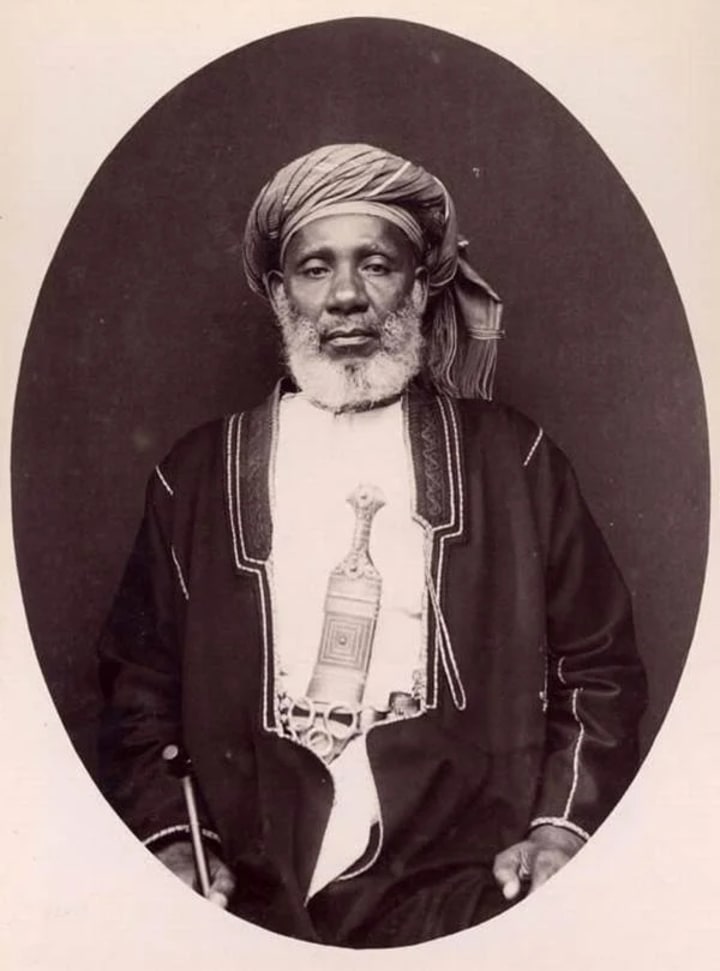
Jameson told Tip how he would like to witness cannibalism in person. Tip then consulted with the village's chiefs, who then told him that he'd better purchase a slave. Jameson then asked the price, and gave them six handkerchiefs.
A man returned a few moments later with the 10-year-old girl.
The chiefs told their villagers, "This is a present from a white man who desires to see her eaten.
The girl was said to then have been tied to a tree, while the natives sharpened their knives for a while. Then one of them stabbed her twice in the belly.
Jameson wrote in his diary:
Three men then ran forward and began to cut up the body of the girl, finally her head was cut off and not a particle remained, each man taking his piece away down the river to wash it.
The girl never screamed during her last moments.
Jameson was making rough sketches of the horrible scenes as it unfolded, he afterward went back to his tent where he then finished the sketches in watercolor.
Jameson claimed that the whole incident was a big misunderstanding in a letter to his wife. He stated that he instead offered the handkerchiefs as a joke and that he was unaware that the locals would actually go through with cannibalizing the girl. Once he saw them stab and dismember her, there was nothing he could do but watch.
The news outraged the public, both in Europe and the US, but Jameson never faced justice for his role in the death of the innocent girl. He died from a fever just months later.
The horror story did have one impact, however, The Emin Pasha Relief Expedition was the last of the kind.
About the Creator
Shelby
Just a girl who loves to write about paranormal and life stuff. Please enjoy






Comments
There are no comments for this story
Be the first to respond and start the conversation.